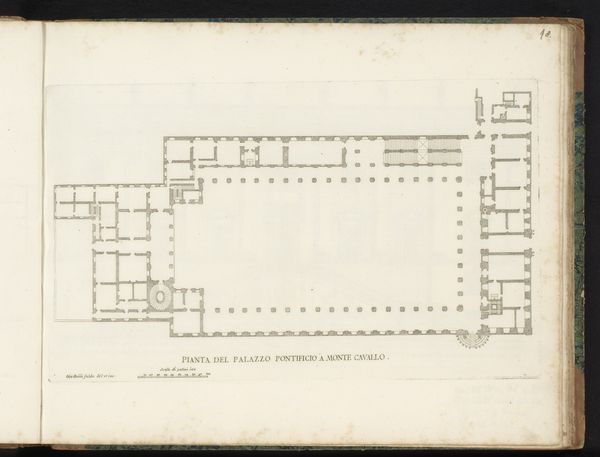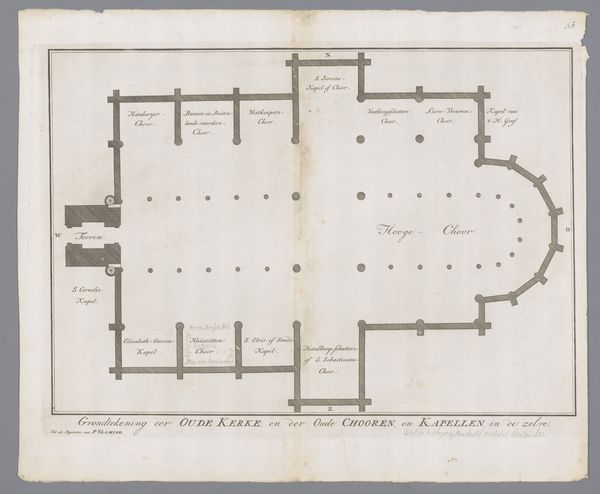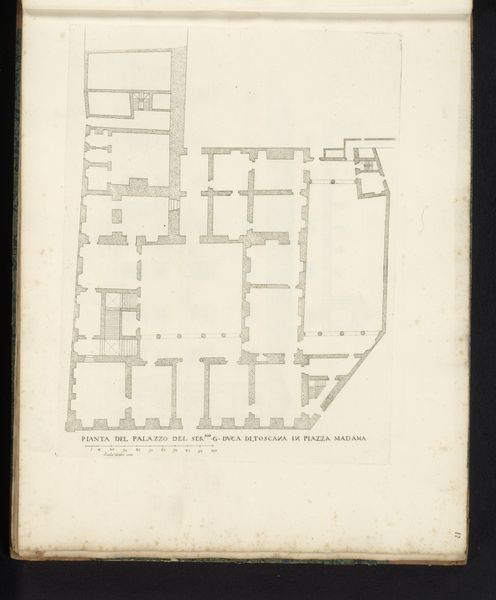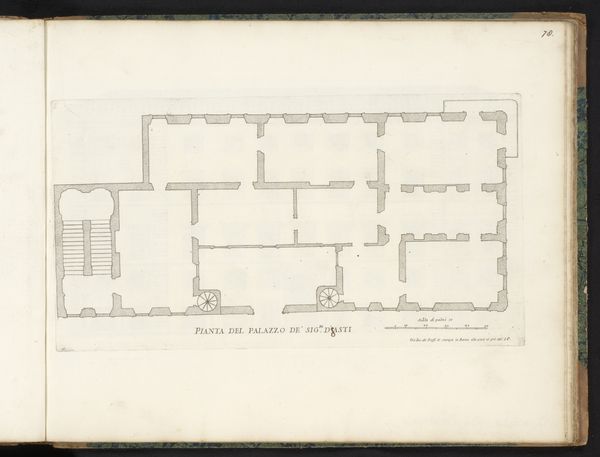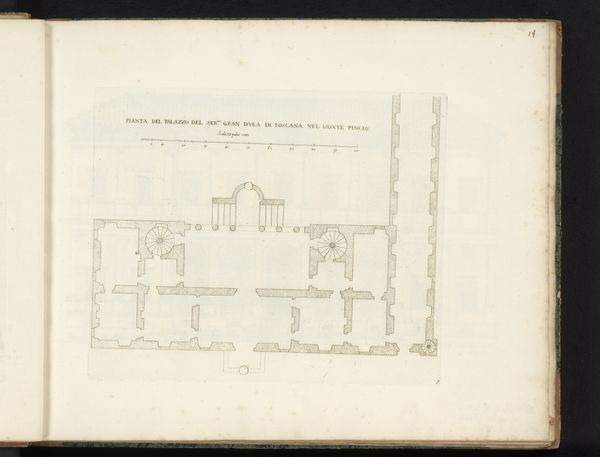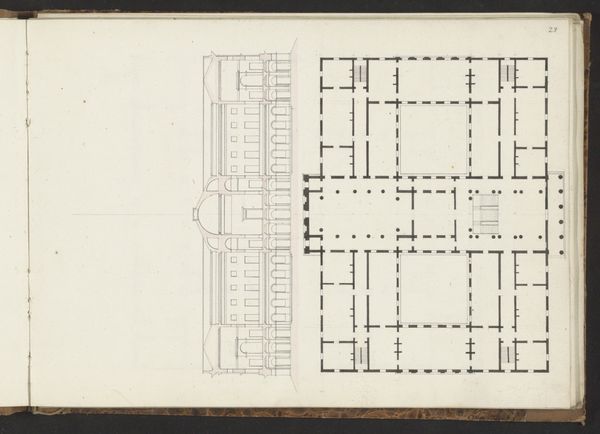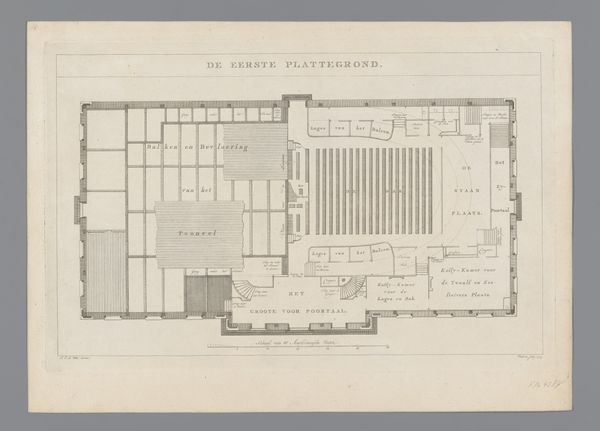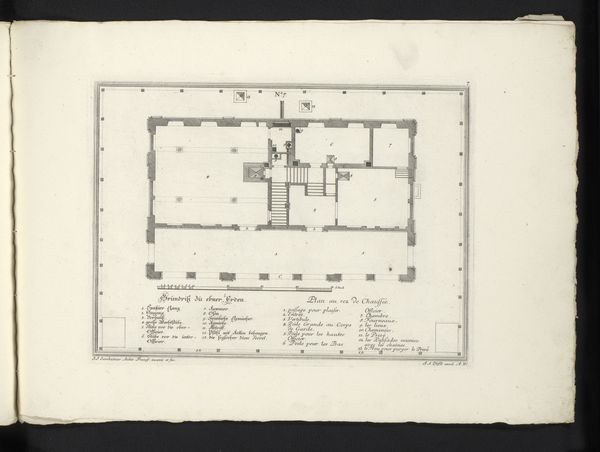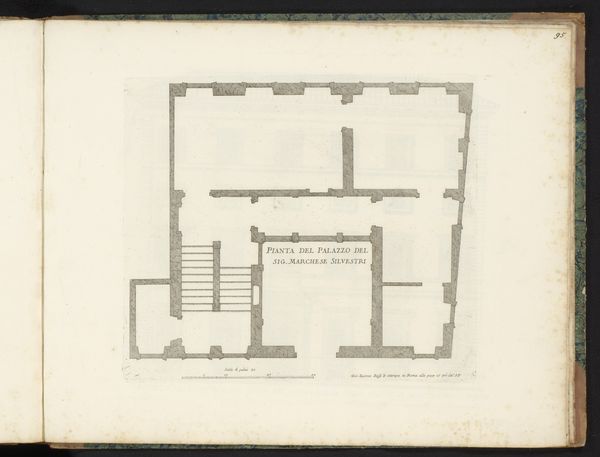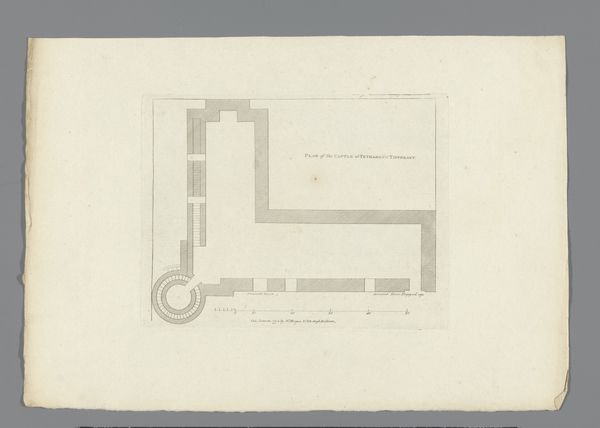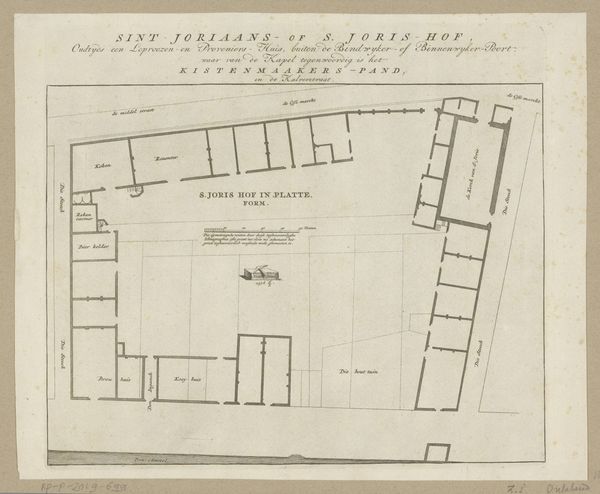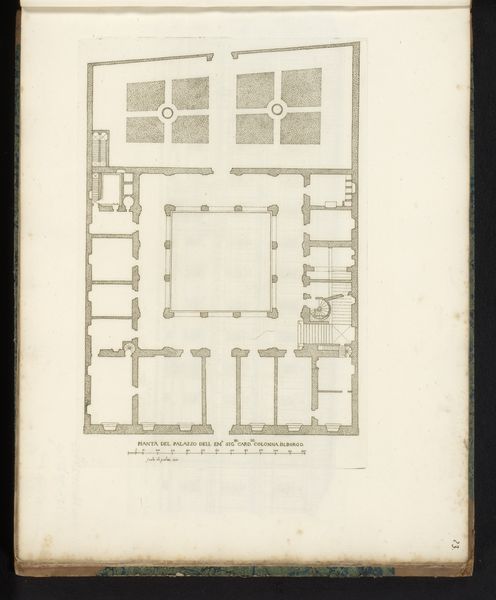
Plattegrond van het paleis van de hertog van Ceri te Rome after 1655
0:00
0:00
drawing, print, etching, paper, ink, architecture
#
drawing
#
baroque
#
ink paper printed
# print
#
etching
#
paper
#
ink
#
cityscape
#
history-painting
#
architecture
Dimensions: height 180 mm, width 420 mm
Copyright: Rijks Museum: Open Domain
Giovanni Battista Falda made this floor plan of the Palazzo Ceri in Rome with ink on paper sometime in the 17th century. At first glance, this plan appears as a purely technical drawing, its crisp lines and detailed labels serving a practical purpose. But the printmaking process itself is quite rich. Etching, the technique used here, involves coating a metal plate with wax, drawing through the wax to expose the metal, and then submerging the plate in acid. The acid bites into the exposed lines, creating grooves that hold ink. The plate is then carefully wiped clean, leaving ink only in the etched lines, and finally pressed onto paper. The result is a precise yet textured image, born from a labor-intensive process. Consider the social context: this wasn't just about representing a building, but about celebrating power. The Palazzo Ceri was a symbol of wealth and status, and Falda’s print, with its exacting detail, elevates the building. The print transforms mere architecture into a potent statement of social hierarchy. It reminds us that even the most functional objects are embedded with cultural significance.
Comments
No comments
Be the first to comment and join the conversation on the ultimate creative platform.
